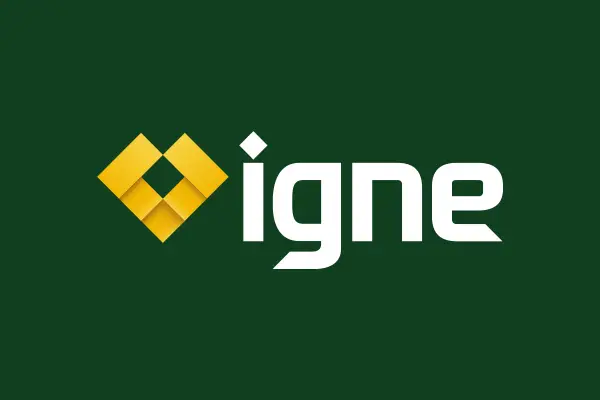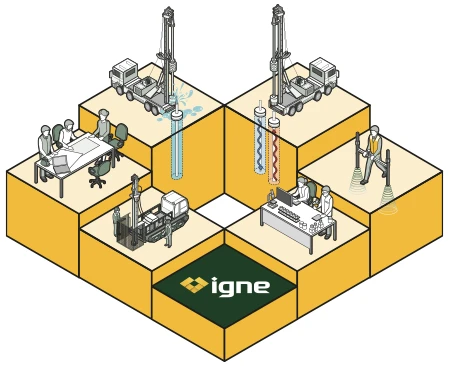

Building Cross Section Scans as Part of Measured Building Surveys
Building cross section scans are a form of surveying that captures vertical slices through a building to map out the internal structural elements.
About
What are Building Cross Section Scans?
When planning a construction, renovation, or redevelopment project, having a detailed understanding of a building’s internal structure is critical. Building cross section scans provide an invaluable level of insight, capturing vertical slices through a structure to reveal its internal composition.
At Igne, we use advanced technology to carry out highly accurate building cross section scans as part of our measured building survey services, ensuring that your project is informed by precise and reliable data.
These scans provide detailed views of walls, floors, ceilings, and other internal features, showing their relationships to each other and giving a clear picture of how the building is constructed.
The resulting cross sections allow architects, engineers, and project managers to see a building’s internal composition and identify any potential structural issues.
The data from building cross section scans is used with floor plans and elevation drawings to create detailed design drawings or 3D models that provide essential information for the planning and design phases of a project. These scans are particularly valuable for projects involving renovation, refurbishment, or historical preservation, where understanding the internal structure is vital for maintaining the building’s integrity.

Useage
Why Carry Out Building Cross Section Scans as Part of Measured Building Surveys?
Carrying out building cross section scans as part of a measured building survey is essential for reasons including:
Accurate Structural Understanding
Cross section scans offer a clear view of the building’s internal structure, allowing architects and engineers to plan modifications, reinforcements, or extensions with precision. This data ensures that design plans align with the existing structure’s framework.
Renovation & Refurbishment
For older or heritage buildings, cross section scans are particularly useful. They provide a non-invasive way to assess internal conditions without causing any damage, making it easier to plan sensitive restorations or upgrades.
Building Services Integration
When adding new utilities or services like plumbing, electrical systems, or HVAC, cross section scans provide a detailed understanding of the internal layout, ensuring these services are installed efficiently and without disruption to the existing structure.
Safety & Risk Mitigation
Cross section scans can reveal hidden structural issues, such as voids, cracks, or misaligned elements, allowing project teams to address potential risks before they lead to costly or dangerous situations during construction.
Trust
Why Trust & Commission Igne’s Building Cross Section Scanning Services?
Igne is a leader in site investigation and surveying services, offering specialised building cross section scanning that you can trust. Here’s why commissioning Igne for this service is the right choice for your project:
Precision & Expertise
Our team of skilled surveyors uses the latest 3D laser scanning and digital tools to ensure the highest levels of accuracy in capturing building cross sections. We have the technical expertise needed to deliver comprehensive, reliable data for even the most complex projects.
Customised Approach
At Igne, we tailor our cross section scanning services to meet the specific needs of your project. Whether you’re working on a small-scale renovation or a large commercial development, we provide data in a format that best suits your design and construction requirements.
Proven Track Record
With extensive experience in the property, infrastructure, and construction sectors, Igne has a solid reputation for delivering high-quality survey data that helps clients de-risk their projects. We understand the critical role that accurate information plays in successful project outcomes.
Fast & Efficient Service
Using advanced technology, we can complete building cross section scans quickly and with minimal disruption to the building or site. This efficiency allows you to move forward with your project sooner while maintaining high standards of accuracy and quality.
Risks
The Risks of Not Doing Building Cross Section Scans Before You Start a Project
Failing to carry out building cross section scans before starting a project can introduce risks, including:
Design Inaccuracies
Without cross section scans, project teams may rely on incomplete or outdated information about the building’s internal structure. This can lead to design errors, miscalculations, and costly changes during construction.
Structural Issues
Without a clear understanding of the internal composition, structural weaknesses or hidden defects could go unnoticed. This increases the risk of damage to the building during renovation or construction work, leading to safety concerns or delays.
Unforeseen Costs
Discovering hidden structural problems during construction can result in significant project delays and increased costs, as these issues will need to be addressed urgently. Cross section scans help prevent these surprises by providing a clear picture of the building’s condition.
Regulatory Non-Compliance
Many building projects require a thorough understanding of the structure to meet local building codes and regulations. Without accurate cross section data, you may face compliance issues that could result in delays or additional costs.
Benefits
The Benefits of Scanning Building Cross Sections
The benefits to scanning building cross sections as part of your measured building survey can include:
Enhanced Project Accuracy
Building cross section scans provide accurate and detailed information about the internal structure, helping project teams make well-informed design and construction decisions.
Cost & Time Savings
By identifying potential structural issues early on, cross section scans help avoid unexpected problems during construction, saving time and money in the long run.
Improved Collaboration
Detailed cross section data provides a common reference point for all stakeholders, including architects, engineers, and contractors. This improves communication and collaboration across the project team.
Non-invasive Analysis
Cross section scans provide a clear view of the building’s internal structure without the need for invasive methods, making it ideal for heritage buildings and sensitive restoration projects.
Regulatory Compliance
Building cross section scans help ensure that your project meets all necessary regulations and standards by providing accurate documentation of the building’s internal structure.
Process
How Building Cross Section Scans are Done
Igne uses state-of-the-art 3D laser scanning technology to carry out building cross section scans. Here’s a step-by-step breakdown of how the process works:|
-
Initial Consultation
We start by understanding the scope of your project and identifying the key areas where cross section scans are required. This allows us to plan the scanning process efficiently. -
On-site Scanning
Our team arrives on-site with specialised 3D laser scanning equipment. The scanners capture millions of data points across the building, creating a highly detailed point cloud that represents the building’s internal structure. -
Data Processing
Once the on-site scanning is complete, we process the data using advanced software to create detailed cross section drawings or 3D models. These visual representations provide clear insights into the building’s internal composition. -
Report Delivery
The final step is delivering the processed data to the client. We provide detailed reports and visual representations, including cross section drawings, that are easy to integrate into your project plans.
Learn More
Frequently Asked Questions about Building Cross Section Scans in Measured Building Surveys
- What is a building cross section scan?
A building cross section scan captures a vertical slice through a structure, showing the internal layout of walls, floors, and other elements. It provides a detailed view of the building’s internal composition.
- Why are cross section scans important?
Cross section scans are crucial for understanding the internal structure of a building. They help identify potential issues, inform design decisions, and ensure that modifications align with the existing framework.
- How accurate are cross section scans?
Using 3D laser scanning technology, cross section scans are highly accurate, often down to millimetres, providing precise data for architects, engineers, and project managers.
- How long does it take to scan a building cross section?
The duration depends on the size and complexity of the building, but most cross section scans can be completed within a day. Data processing and reporting typically take a few additional days.
- What types of buildings can benefit from cross section scans?
Cross section scans are beneficial for all types of buildings, from residential properties to commercial and industrial facilities. They are particularly useful for older or heritage buildings that require careful planning during renovation.
The Next Step
At Igne, we specialise in delivering accurate and reliable building cross section scanning services to help you de-risk your project.
Whether you’re working on a renovation, refurbishment, or new construction, our expert team is here to provide the precise data you need.
Contact us today to learn more about our building cross section scanning services and explore the full range of measured building surveys we offer to support your project.
